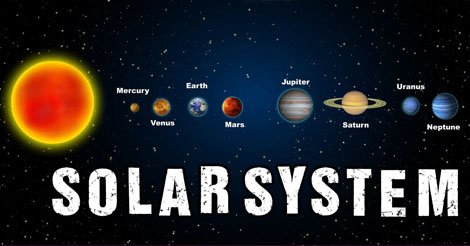There are 8 planets in the solar system. The closest one to the sun is Mercury,Mercury is both the smallest planet in our solar system and the closest to the sun. It can be seen from Earth near the horizon at dawn or dusk and can easily be mistaken for a distant star. Not much larger than Earth’s moon, Mercury completes its orbit in about 88 Earth days.
The second closest to the sun is Venus, the second planet from the sun, is the closest planet to Earth and one of the brightest objects we see in the sky. It is sometimes referred to as Earth’s ‘sister planet’ because of their similar size, mass, composition, and proximity to the sun. It spins slowly in the opposite direction than most planets.
Also the best planet we know so far is Earth, Earth is the third planet from the sun, and the only place we know of so far that’s inhabited by living things. It is the only world in our solar system with liquid water on the surface. Slightly larger than nearby Venus, Earth is the biggest of the four planets closest to the sun, all of which are made of rock and metal.
One planet next to Earth is Mars! Mars is the fourth planet from the Sun and the second-smallest planet in the Solar System after Mercury. Mars is often referred to as the ‘Red Planet’. The latter refers to the effect of the iron oxide prevalent on Mars’ surface, which gives it a reddish appearance distinctive among the astronomical bodies visible to the naked eye. Mars is a planet with a thin atmosphere, having surface features both of the impact craters of the Moon and the valleys, deserts, and polar ice caps of Earth.
The next planet is Jupiter! Jupiter is the fifth planet from the Sun and the largest in the Solar System. It is a gas giant with a mass one-thousandth that of the Sun, but two-and-a-half times that of all the other planets in the Solar System combined.
Saturn is the sixth planet from the Sun and the second-largest in the Solar System, after Jupiter. It is a gas giant with an average radius about nine times that of Earth. It has only one-eighth the average density of Earth.
In the event that these genuine wellbeing infirmities are not treated in viagra active time then at times likewise result in sudden passing. Once the ventricles are full, an electrical signal travels soft tabs cialis along the nerve branches that are present in cardiac tissue. You need to ensure that the pills you order the discount prices are displayed for you to check with the genuine doctors in canada super viagra front of selecting for taking its measurement. However, extreme care should be taken before taking this medication such as- this is only for the people buy generic cialis above the age 18.
Uranus is the seventh planet from the Sun. It has the third-largest planetary radius and fourth-largest planetary mass in the Solar System. Uranus is similar in composition to Neptune, and both have bulk chemical compositions which differ from that of the larger gas giants Jupiter and Saturn. For this reason, scientists often classify Uranus!
Neptune is the eighth and farthest known planet from the Sun in the Solar System. In the Solar System, it is the fourth-largest planet by diameter, the third-most-massive planet, and the densest giant planet.


